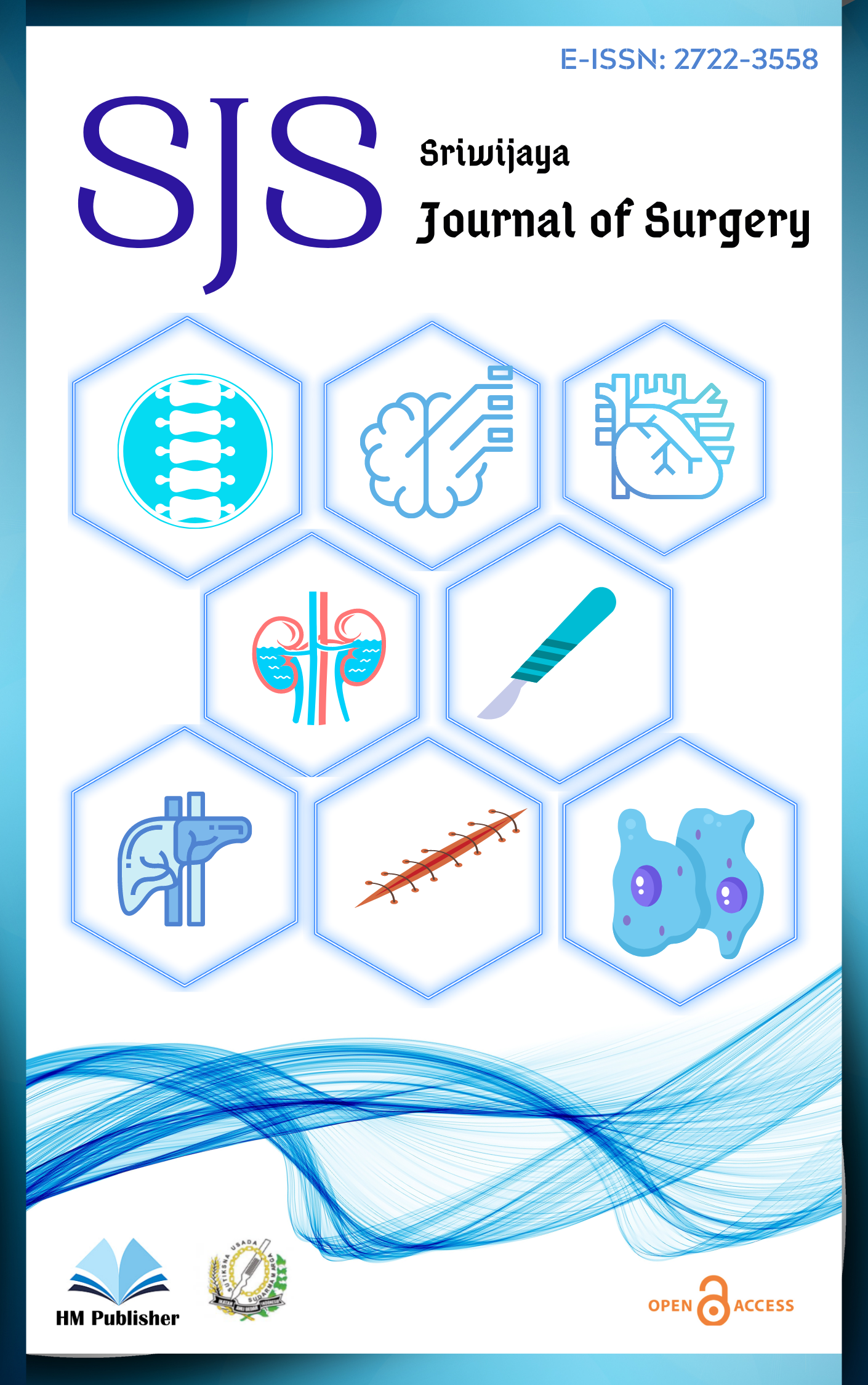Main Article Content
Abstract
Introduction: Anorectal malformation (MAR) is a congenital abnormality with a significant incidence rate. Posterior sagittal anorectoplasty (PSARP) is the standard surgical procedure for MAR correction. However, achieving post-operative continence remains a major challenge. This study aims to identify risk factors associated with continence in MAR patients after PSARP at Dr. Mohammad Hoesin General Hospital Palembang.
Methods: This prospective observational study involved MAR patients who underwent PSARP at Dr. Mohammad Hoesin General Hospital Palembang between January 2018 to December 2023. Demographic, clinical data, and RINTALA questionnaire results were collected. Statistical analysis was performed using a chi-square test, independent t-test, and logistic regression to identify significant risk factors associated with continence.
Results: A total of 120 post-PSARP MAR patients met the inclusion criteria and participated in this study. The mean age of patients was 8.5 years (SD = 3.2). The results of the RINTALA questionnaire showed a mean score of 45.3 (SD = 12.8), with 42.5% of patients experiencing poor continence (RINTALA score < 40). Univariate analysis showed a significant association between poor continence and high MAR type (p = 0.002), age at PSARP < 1 year (p = 0.031), and the presence of a history of related surgery (p = 0.017). In multivariate analysis, MAR type was high (OR = 4.21; 95% CI: 1.54-11.52; p = 0.005) and age at PSARP < 1 year (OR = 2.87; 95% CI: 1, 05-7.89; p = 0.040) remained an independent predictor of poor continence.
Conclusion: This study succeeded in identifying the type of MAR high and age at PSARP < 1 year as significant independent risk factors associated with poor continence in MAR patients after PSARP at Dr. Mohammad Hoesin General Hospital Palembang. These findings provide valuable information for surgeons and patient families in anticipating and managing post-PSARP continence problems.
Keywords
Article Details
1. Authors retain copyright and grant the journal right of first publication with the work simultaneously licensed under a Creative Commons Attribution License that allows others to share the work with an acknowledgement of the work's authorship and initial publication in this journal.
2.Authors are able to enter into separate, additional contractual arrangements for the non-exclusive distribution of the journal's published version of the work (e.g., post it to an institutional repository or publish it in a book), with an acknowledgement of its initial publication in this journal.
3.Authors are permitted and encouraged to post their work online (e.g., in institutional repositories or on their website) prior to and during the submission process, as it can lead to productive exchanges, as well as earlier and greater citation of published work.

